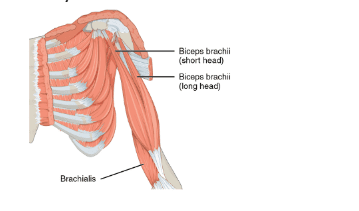Our feelings, behaviors, mental health, and general quality of life can all be profoundly impacted by negative thought patterns. But it’s simple to break these bad behaviors and adopt a happier, more pragmatic outlook. In this article, we’ll examine the fundamental ideas of cognitive therapy and offer a detailed manual for eliminating unfavorable thought patterns.
Understanding Negative Thought Patterns
- The power of thoughts
Our thoughts have a profound influence on our emotions and behaviors. Stress, pessimism, and low self-esteem can result from the negative mental patterns we create.
- Identifying negative thought patterns
The first step in bringing about change is awareness. We can begin to comprehend the effects bad thought patterns have on our mental health by becoming aware of them. Common examples include negative self-talk, magnifying failures, and filtering out positive experiences. Identifying these patterns allows us to challenge and transform them.
The Principles of Cognitive Therapy
- The connection between thoughts, feelings, and behaviors
By addressing and modifying our thoughts, we can influence our emotions and actions in a positive way. This principle forms the foundation of cognitive therapy and provides a roadmap for change.
- Challenging negative thoughts
Cognitive therapy encourages individuals to challenge and question their negative thoughts. By examining the evidence supporting these thoughts, we can often find alternative, more balanced perspectives. This process involves identifying cognitive distortions, such as overgeneralization or jumping to conclusions, and replacing them with more realistic and constructive thoughts.
Steps to Break Free from Negative Thought Patterns
- Step 1: Recognize negative thoughts
Developing awareness of negative thoughts is essential. Pay attention to your inner dialogue and identify recurring negative patterns. Jotting down these thoughts in a journal can help in the recognition process.
- Step 2: Evaluate the evidence
Once you recognize a negative thought, critically evaluate the evidence supporting it. Ask yourself if there is any factual basis for the thought or if you are making assumptions. Look for alternative explanations or possibilities that may challenge the negativity.
- Step 3: Reframe negative thoughts
After evaluating the evidence, reframe the negative thought into a more balanced and realistic perspective. Replace overly negative or distorted thoughts with more positive and constructive ones.
- Step 4: Practice self-compassion
Negative thought patterns often stem from harsh self-judgment and self-criticism. Cultivating self-compassion is crucial in breaking free from these patterns. Remember that everyone makes mistakes and experiences setbacks.
- Step 5: Utilize cognitive restructuring techniques
Cognitive restructuring techniques involve actively challenging and replacing negative thoughts. Some effective techniques include thought-stopping (interrupting negative thoughts), thought substitution (replacing negative thoughts with positive affirmations), and cognitive distancing (viewing thoughts as passing mental events rather than absolute truths).
- Step 6: Seek professional support
Although self-help techniques might be beneficial, it’s crucial to seek professional assistance when you need it. A qualified CBT therapist for cognitive therapy can provide guidance, personalized strategies, and additional tools to help you break free from negative thought patterns.
Integrating Cognitive Therapy into Daily Life
- Practice mindfulness
Mindfulness involves being present at the moment and observing your thoughts without judgment. By practicing mindfulness, you can become more aware of negative thought patterns as they arise and choose not to engage with them. Mindfulness meditation and exercises can help develop this skill.
- Cultivate a positive environment
Surround yourself with positive influences, whether it’s supportive friends and family or uplifting and inspiring content. A positive environment can help counteract negative thought patterns and foster a healthier mindset.
- Practice self-care
It might be simpler to extricate yourself from harmful thought patterns if you attend to your bodily and emotional needs. Self-care enhances resilience and supports a positive mindset.
- Set realistic goals and celebrate progress
Setting realistic and achievable goals can provide a sense of purpose and direction. Break larger goals into smaller, manageable steps, and celebrate each milestone along the way. Recognizing and celebrating your progress reinforces positive thinking and motivates you to continue on your journey of breaking free from negative thought patterns.
- Practice gratitude
Cultivating gratitude can shift your focus from negativity to appreciation for the positive aspects of your life. Every day, be grateful for the support of your loved ones, fun experiences, or personal successes. Gratitude helps reframe your perspective and fosters a more positive mindset.
Conclusion:
Breaking free from negative thought patterns is a transformative journey that requires commitment, self-awareness, and the application of cognitive therapy principles. By recognizing negative thoughts, challenging them with evidence-based reasoning, and reframing them into more balanced perspectives, you can gradually shift your mindset towards positivity and resilience. Integrating cognitive therapy techniques into your daily life, practicing self-care, and cultivating a positive environment further support this process. Remember, breaking free from negative thought patterns is a gradual process, and seeking professional support when needed can provide additional guidance and assistance on your path to mental well-being.

As the editor of the blog, She curate insightful content that sparks curiosity and fosters learning. With a passion for storytelling and a keen eye for detail, she strive to bring diverse perspectives and engaging narratives to readers, ensuring every piece informs, inspires, and enriches.









